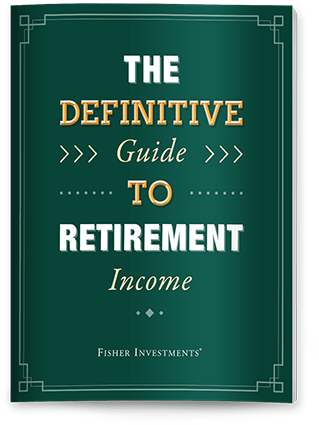Personal Wealth Management / Market Analysis
A Hot July Mailbag
Another round of As to your Qs.
July is winding down, and the dog days of August are nearly upon us—the days when everything seems a little hotter, a little dustier and a little (or a lot) more humid. Time for a dip in our ice-cold refreshing mailbag!
Do people who get out of the market during volatile patches underperform?
A lot of them do, based on the various studies and anecdotal evidence we have encountered. And not because everyone sells at the exact low. When markets experience a correction—a sharp, sentiment-fueled pullback of -10% to -20%—even if you sell before the low, there is a high risk of not coming out ahead. It all ties to a simple question: When do you get back in?
Time and again, we have seen the factor motivating knee-jerk selling in a correction isn’t greed—it is fear. That is, people aren’t jumping out in hopes of timing a quick re-entry at the low point. The much more common motivation is the desire for stability.
For selling during a correction to add value, you must buy back in at a lower point than where you sold. Otherwise, you miss returns, which can be very difficult to recoup without taking undue risk.
Those selling out of fear are generally less likely to achieve this, for a simple reason: The best time to buy is when fear is highest. Corrections typically end when sentiment is at rock-bottom, which sets up a very high wall of worry to enable the fast rebound. Generally, this means things will look very uncertain to the average observer. Headlines will warn of further trouble and deeper declines. Because markets move before economic data, results that emerge later may only prolong concerns.
At times like this, people who sold out of fear tend to crave clarity. Hard evidence the worst is over. Markets never give all-clear signals, but humans seem hard-wired to want them anyway. Because corrections end as suddenly as they began, these folks might not “feel” a sense of clarity or stability until the market has come all the way back from where they sold and then some. Some folks might buy at that point. Others might be kicking themselves and resolve to wait for a better buying opportunity ahead—a better opportunity that might never come.
If you find yourself tempted to sell when stocks get rocky, understand first that it is a normal human instinct. Then remind yourself it can be wise to set instinct to the side and think clearly and as long-term as you can. Ask yourself what you would need to see in order to get back in, then look at past corrections and be honest with yourself about whether it would have been too late by the time that clarity arrived.
Unless you have a clear, set process that will get you re-invested to capture the rebound, there is a high likelihood you will be sacrificing long-term growth for near-term comfort. That could mean long-term discomfort. And, spoiler alert, we don’t know of anyone who has mastered this process. Anyone who could time corrections repeatedly and accurately would be an absolute legend. Maybe someone gets lucky once, but luck isn’t a strategy, just as hope isn’t a plan.
If there is so much uncertainty, why should anyone invest now?
We will flip this back with a question: What are your long-term goals? That is always the “why” behind any investment, or at least we think it should be.
People often imply there must be a solid reason to own stocks, as if cash is their default investment. But presuming you are investing to reach certain goals over time, then your default investment should be whatever offers the highest likelihood, based on historical returns, of reaching those goals. That means you need a good reason to be out of stocks or bonds, not in. And, considering markets pre-price widely known information, views and forecasts, that good reason can’t be something that leads the headlines and everyone points to as stoking “uncertainty.” Stocks’ long-term returns include all corrections, pullbacks and deeper bear markets along the way. Enduring this downside, however uncomfortable in the moment, won’t keep you from reaping stocks’ long-term returns. But missing bull markets will.
In bull markets, stocks climb a proverbial “wall of worry.” That means things will often feel scary or uncertain. Hence, if you opt to sit out periods that seem uncertain, you will run a high likelihood of missing bull market returns as stocks climb the wall and uncertainty fades.
So think about why you are investing. To fund retirement? Maintain a certain quality of life? Leave a bequest to your heirs or a charity? Take care of younger families? The answer to this is why you are investing now, uncertainty or no.
Now that crypto markets are more regulated, are they more viable as an investment?
We don’t think so. Not that we are anti-crypto, but regulation doesn’t magically transform anything from a speculative asset to an investment with rational underlying fundamentals. Regulation might improve investor protections to a degree or broaden participation by establishing and clarifying rules for banks and custodians. But they won’t make bitcoin suddenly move on something other than sheer sentiment. Variable annuities and gambling are regulated, too, but neither is a golden ticket. Bitcoin could have the most optimal, investor-friendly rules in the history of rulemaking, and as long as it boomed and busted on hype and whims, we don’t think it would be a match for most investors’ goals and needs.
What do you worry about?
Please don’t take this the wrong way, but we try not to worry about anything. We are as human as the next bunch (we think), but we find worry—or really any emotion—isn’t helpful when thinking about markets. To worry means to risk thinking irrationally. So we think it is best to leave emotion out of it and ask a different question: What are potential risk factors we are monitoring?
Generally, we think it is wise to watch for sentiment getting too hot, which would mean investors at large are risk-blind and stocks have finished climbing the wall of worry. We also think it is important to watch for potential “wallops,” or big, broadly unseen negatives that could knock a bull market before it finishes climbing the wall. This usually will exclude the risks splashed across headlines every day, since markets reflect all widely known information. We keep an eye on these, because pride is the enemy, but we also look out for underappreciated monetary policy errors, disruptive legislation creating winners and losers, regulatory changes that could discourage risk taking, that sort of thing. The most insidious ones would be the ones society broadly thought good, blinding folks to second-order consequences. Happily, we don’t see anything major on that front today. But we are always looking.
How much cash is on the sidelines?
According to the Fed’s quarterly Financial Accounts of the United States report (known colloquially as the Z report), US households and nonprofits had a combined $15.3 trillion in cash at Q1’s end.[i] This is the total of all checkable deposits, time deposits, “other” deposits and money market funds.
How much of this is actually “on the sidelines,” meaning, cash that could be moved into stocks? This is impossible to know. A lot of it would be people’s general day-to-day cash buffers and emergency funds. Even if we narrow it to the $4.8 trillion in money market accounts, a lot of that could be emergency funds, future down payments or earmarked for other short-term purposes.[ii]
But also, we kind of think it doesn’t matter. This tends to raise some hackles when we say it, but “dry powder” and “cash on the sidelines” are irrelevant. Every stock purchase is a sale. Jane uses $3,000 of dry powder to buy 50 shares in our favorite fake company, Widgets ‘R’ Us. Where did those 50 shares come from? Blaine, who sold them for that same $3,000. All money going into stocks is canceled, perfectly, by the money going out on the other side of the transaction.
Stocks are an auction marketplace. Prices move not on the amount of money in everyone’s pocket, but on investors’ collective eagerness to pay more for a dollar of future earnings. And always, for every buyer, there is a seller.
If you would like to contact the editors responsible for this article, please message MarketMinder directly.
*The content contained in this article represents only the opinions and viewpoints of the Fisher Investments editorial staff.
Get a weekly roundup of our market insights
Sign up for our weekly e-mail newsletter.

See Our Investment Guides
The world of investing can seem like a giant maze. Fisher Investments has developed several informational and educational guides tackling a variety of investing topics.




